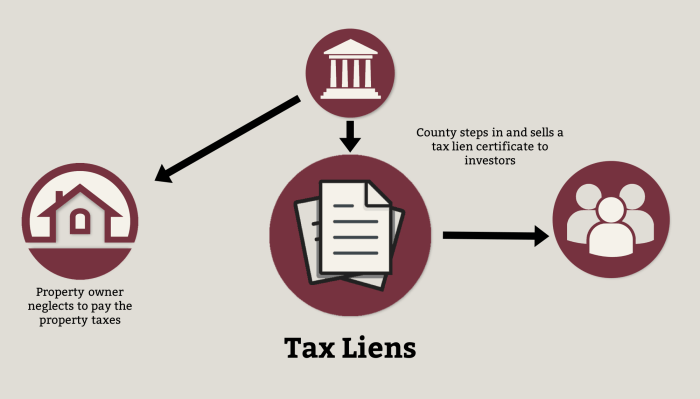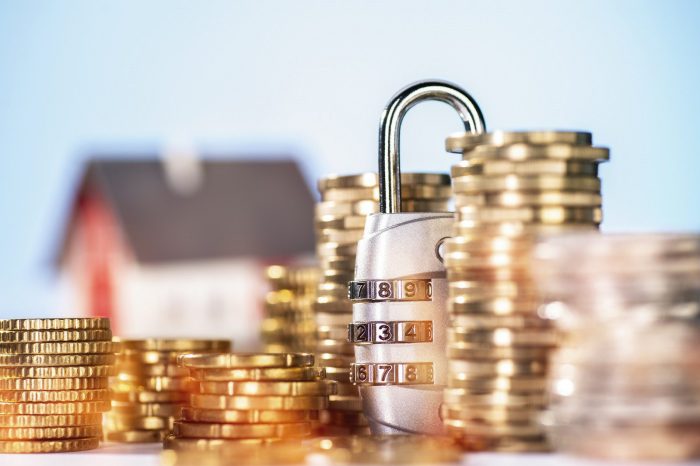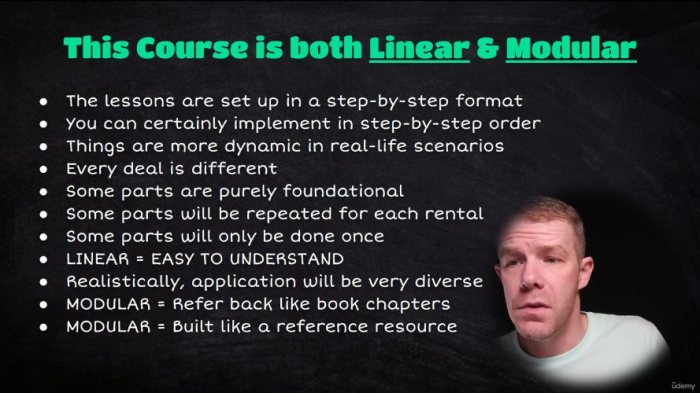Is Art a Good Investment Exploring the World of Art as an Asset Class
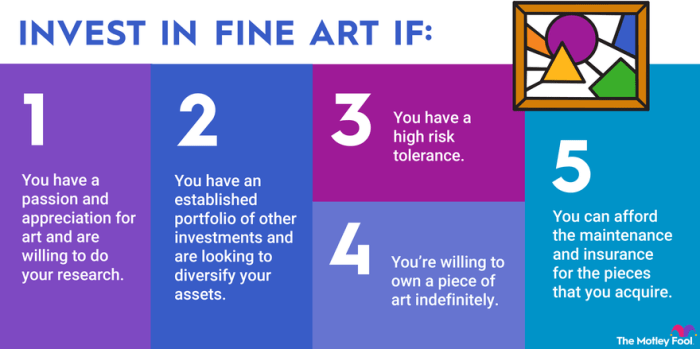
Is art a good investment? This question has intrigued art enthusiasts and financial minds alike for centuries. From the opulent patronage of the Renaissance to the frenzied bidding wars of contemporary auctions, the allure of art as an asset class has captivated collectors and investors. Art, with its intrinsic beauty and cultural significance, has transcended its traditional role as a mere decorative element and evolved into a complex market driven by factors such as artist reputation, rarity, and historical context. This exploration delves into the historical evolution of art as an investment, examines the factors that influence its value, and navigates the intricate landscape of the art market.
The art market, encompassing galleries, auction houses, and online platforms, operates within a global network that connects artists, collectors, and institutions. This intricate web of players shapes investment trends and influences the price of artworks. However, art investment, like any other financial endeavor, comes with inherent risks. Market volatility, liquidity issues, and authentication challenges are just some of the hurdles that investors must navigate. Understanding these risks and employing prudent investment strategies is crucial for maximizing returns and minimizing losses.
The Historical Perspective of Art as an Investment
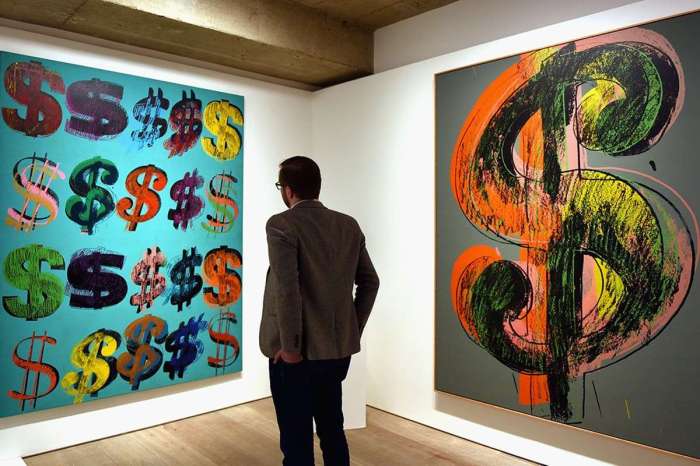
The concept of art as an investment has evolved significantly over time, tracing a path from the patronage-driven Renaissance to the globalized art markets of today. This evolution is marked by the interplay of economic, social, and cultural factors that have shaped how art is valued, traded, and perceived as an asset class.
The Rise of Art as an Asset Class
The transformation of art from a purely aesthetic pursuit to a tangible asset class can be attributed to several key factors:
- Patronage and Royal Collections: During the Renaissance, wealthy patrons, including royalty and the Church, played a crucial role in commissioning and collecting art. These patrons saw art not only as a means of expressing power and prestige but also as a valuable investment. For example, the Medici family of Florence amassed an impressive collection of paintings, sculptures, and other artworks that later became the foundation of the Uffizi Gallery.
- The Development of Art Markets: The emergence of art markets, particularly in cities like Amsterdam and London during the 17th and 18th centuries, facilitated the buying and selling of artworks, creating a framework for their commercial value. Auction houses, like Christie’s and Sotheby’s, established themselves as key players in the art market, offering a platform for both collectors and investors to participate in the trade.
- The Rise of Art Criticism and Connoisseurship: The development of art criticism and connoisseurship in the 19th century further fueled the rise of art as an investment. Art critics and connoisseurs, like John Ruskin and Charles Baudelaire, shaped public opinion about artists and their works, influencing market trends and valuations. Their writings and opinions contributed to the establishment of artistic hierarchies, with certain artists and styles commanding higher prices than others.
Notable Artists and Artworks as Investments
The historical evolution of art as an investment is evident in the performance of certain artists and artworks over time. Here are some notable examples:
- Leonardo da Vinci’s “Mona Lisa”: This iconic portrait, painted around 1503, has become a symbol of art investment. Its value has skyrocketed over the centuries, making it one of the most valuable paintings in the world. The “Mona Lisa” serves as a prime example of how historical significance, artistic mastery, and cultural recognition can drive the value of an artwork.
- Vincent van Gogh’s “Sunflowers”: Painted in 1888, this vibrant still life is another example of an artwork that has experienced significant appreciation in value. Van Gogh’s work, initially dismissed during his lifetime, gained widespread recognition after his death, making his paintings highly sought-after by collectors and investors.
- Pablo Picasso’s “Guernica”: This monumental painting, created in 1937, is a powerful testament to the artist’s political and artistic influence. While it’s not typically considered a traditional investment, “Guernica” has become a symbol of historical and cultural significance, further solidifying its value within the art market.
Factors Influencing Art Value and Investment Potential
The value of an artwork is determined by a complex interplay of factors, each contributing to its desirability and potential for appreciation in the art market. Understanding these factors is crucial for both art collectors and investors, as they provide insights into the dynamics of the art market and help in identifying promising investment opportunities.
Artist Reputation
An artist’s reputation plays a pivotal role in shaping the value of their work. A well-established artist with a strong track record of exhibitions, critical acclaim, and market success commands higher prices than emerging or lesser-known artists. The recognition and prestige associated with a renowned artist create a strong demand for their work, driving up prices.
Rarity
The scarcity of an artwork, often influenced by factors like limited editions, unique pieces, or the artist’s production volume, significantly impacts its value. Rare artworks, especially those from a prominent artist’s early career or unique pieces, are highly sought after by collectors and investors, leading to higher prices.
Historical Significance
Artworks with historical significance, such as those associated with major events, movements, or influential figures, often hold greater value. Their connection to history and their ability to provide insights into past cultures and societies make them desirable for museums, institutions, and collectors.
Condition
The condition of an artwork, including its physical state, preservation, and any restoration work, directly affects its value. A well-preserved artwork in excellent condition is considered more desirable and commands a higher price than a damaged or poorly maintained piece.
Provenance
Provenance refers to the documented history of ownership and custody of an artwork. A clear and well-documented provenance adds credibility and authenticity to an artwork, increasing its value. Artworks with a verifiable provenance are more attractive to collectors and investors, as they provide a clear chain of ownership and reduce the risk of forgery or fraud.
Types of Art and Investment Potential
Different types of art offer varying investment potential due to their unique characteristics and market dynamics.
Paintings
Paintings, especially those by renowned artists, are considered a traditional and established investment asset. They offer a high degree of liquidity, with a well-developed market for buying and selling. However, the value of paintings can fluctuate significantly based on the artist’s reputation, style, and market trends.
Sculptures
Sculptures, particularly those made of valuable materials like bronze or marble, can be valuable investments. Their size, weight, and unique qualities often make them more challenging to handle and transport, leading to lower liquidity compared to paintings. However, sculptures can appreciate significantly in value, especially those by renowned sculptors.
Prints
Prints, particularly limited edition prints, can offer a more affordable entry point into the art market. Their value is influenced by the artist’s reputation, the printing technique, and the edition size. However, the market for prints can be more volatile than for paintings or sculptures, and liquidity can be limited.
Contemporary Art
Contemporary art, encompassing works created by living artists, is known for its diversity and innovation. The investment potential of contemporary art can be high, but it’s also highly speculative and requires a deep understanding of the market. The value of contemporary art can fluctuate rapidly based on market trends, artist popularity, and critical reception.
Factors Influencing Art Value and Investment Potential
| Factor | Impact on Market Demand | Impact on Price Fluctuations |
|---|---|---|
| Artist Reputation | High reputation leads to increased demand and higher prices | Fluctuations influenced by changes in artist’s reputation and market trends |
| Rarity | Scarcity increases demand and drives up prices | Fluctuations influenced by changes in rarity and market perception |
| Historical Significance | Historical importance attracts museums, institutions, and collectors, boosting demand | Fluctuations influenced by changes in historical context and market trends |
| Condition | Excellent condition increases desirability and value | Fluctuations influenced by changes in condition and restoration efforts |
| Provenance | Clear provenance enhances authenticity and credibility, increasing demand | Fluctuations influenced by changes in provenance documentation and market perception |
The Art Market and Investment Landscape
The art market, a global network of buyers, sellers, and institutions, plays a pivotal role in determining the value and investment potential of artworks. Understanding its structure, key players, and trends is crucial for anyone considering art as an investment.
Major Players in the Art Market
The art market is a complex ecosystem with a diverse range of players, each contributing to its dynamics and shaping investment trends.
- Auction Houses: Auction houses like Sotheby’s, Christie’s, and Phillips are prominent players in the secondary market, facilitating the sale of artworks through public auctions. They attract a global audience of collectors, institutions, and investors, setting price benchmarks and driving market trends.
- Galleries: Galleries serve as intermediaries between artists and collectors, representing artists and showcasing their work. They play a crucial role in the primary market, offering artworks directly from artists to collectors.
- Online Platforms: Online platforms like Artsy, Paddle8, and Saatchi Art have emerged as significant players, providing access to a wider audience and facilitating transactions. They offer a diverse range of artworks, from emerging artists to established masters, and provide a convenient platform for buying and selling.
- Art Dealers: Art dealers act as intermediaries, connecting buyers and sellers, providing expertise, and facilitating transactions. They often specialize in specific periods, movements, or artists, offering valuable insights and guidance to collectors.
- Collectors: Collectors, ranging from individual enthusiasts to institutions, drive the art market by acquiring and holding artworks. Their preferences, tastes, and investment strategies influence market trends and price fluctuations.
- Institutions: Museums, foundations, and other institutions play a significant role in the art market by acquiring and preserving artworks for public display and research. Their acquisitions often influence market sentiment and establish the value of certain artists and periods.
Types of Art Investments
Art investments can be categorized into various types, each offering different risk profiles and potential returns.
| Type of Investment | Description | Example |
|---|---|---|
| Primary Market Acquisitions | Purchasing artworks directly from artists or galleries, often at lower prices than in the secondary market. | Acquiring a painting from a young, emerging artist at their first solo exhibition. |
| Secondary Market Transactions | Buying and selling artworks through auction houses, galleries, or online platforms, where prices are influenced by market demand and historical significance. | Purchasing a print by a well-known artist at an auction, with its value determined by its rarity, condition, and provenance. |
| Art Funds | Investing in funds that pool capital from multiple investors to acquire and manage a portfolio of artworks, offering diversification and professional management. | Investing in an art fund that specializes in contemporary Chinese art, providing access to a curated collection of emerging and established artists. |
Risks and Considerations in Art Investment: Is Art A Good Investment
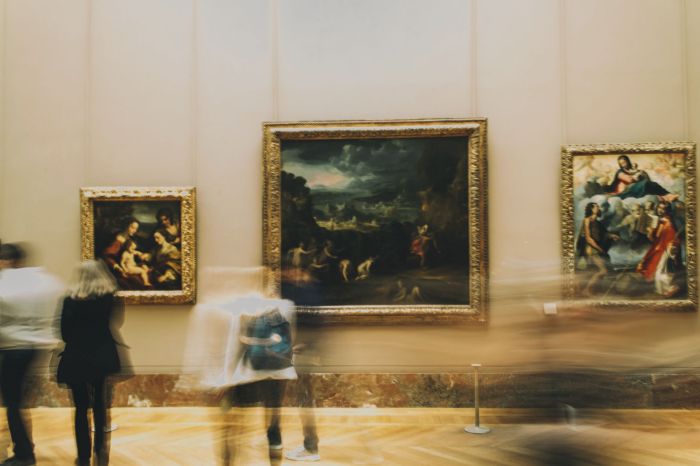
Art investment, while potentially rewarding, is not without its risks. Understanding and mitigating these risks is crucial for any investor looking to navigate this complex market. This section delves into the inherent challenges associated with art investment, emphasizing the importance of due diligence, professional advice, and diversification in minimizing potential losses.
Market Volatility
The art market, like any other market, is subject to fluctuations in value. Factors such as economic conditions, global events, and changing tastes can significantly impact the prices of artworks. For instance, the global financial crisis of 2008-2009 led to a sharp decline in art prices, particularly in the high-end market. This volatility can make it difficult to predict future returns, and investors need to be prepared for potential losses.
Liquidity Issues
Unlike traditional investments like stocks or bonds, art is generally considered illiquid. This means that it can be challenging and time-consuming to sell an artwork quickly and at a desired price. The art market is not as efficient as other markets, and finding a buyer who is willing to pay a fair price can take time. This illiquidity can be particularly problematic during periods of market downturn, when demand for art decreases.
Authentication Challenges
Authentication is a critical aspect of art investment. Forgeries and misattributions are not uncommon in the art world, and verifying the authenticity of an artwork can be complex and expensive. This is particularly true for older works, where documentation may be incomplete or unavailable. A forged or misattributed artwork can significantly decrease its value, leading to substantial financial losses for the investor.
Importance of Due Diligence, Is art a good investment
Due diligence is essential for mitigating the risks associated with art investment. This involves conducting thorough research on the artist, the artwork, and the market conditions. It is crucial to examine the artwork’s provenance (history of ownership) and to consult with experts to verify its authenticity.
Professional Advice
Seeking professional advice from art consultants, advisors, or auction house specialists can provide valuable insights and guidance. These professionals have expertise in the art market and can help investors make informed decisions. They can advise on market trends, artwork selection, and valuation, as well as assist with authentication and sale processes.
Diversification
Diversifying an art portfolio is another important risk mitigation strategy. This involves investing in a variety of artists, styles, and periods. By spreading investments across different categories, investors can reduce their exposure to market fluctuations and the risk associated with any single artwork.
Red Flags and Warning Signs
There are several red flags and warning signs that investors should be aware of when evaluating an art investment opportunity. These include:
- Unrealistic returns: Be wary of promises of high returns, especially if they seem too good to be true. Remember that art investments are not guaranteed to generate profits, and there is always a risk of loss.
- Lack of provenance: If the artwork’s history of ownership is unclear or incomplete, it could be a red flag. A complete and documented provenance is crucial for verifying authenticity and establishing value.
- Pressure to invest quickly: If an investment opportunity is presented with a sense of urgency or pressure to invest quickly, it may be a sign of a scam or a risky venture. Take your time to conduct thorough research and consult with experts before making any decisions.
- Lack of professional expertise: Be cautious about dealing with individuals or entities that lack experience or expertise in the art market. It is important to work with reputable professionals who have a proven track record and a deep understanding of the art world.
- High commissions or fees: Excessive commissions or fees can significantly erode returns. Be sure to compare rates and fees from different professionals before engaging their services.
- Unsubstantiated claims: Be skeptical of claims that are not supported by evidence or documentation. For example, be cautious about claims that an artwork is a rare or valuable piece without proper authentication or appraisal.
By understanding and addressing these risks, investors can increase their chances of success in the art market. Remember that art investment is a long-term strategy that requires patience, research, and a willingness to accept potential losses.
Art Investment Strategies and Approaches
Investing in art can be a rewarding experience, offering the potential for both financial returns and personal satisfaction. However, navigating the art market requires a strategic approach to maximize your chances of success. This section explores various strategies and approaches to art investment, highlighting key considerations and examples of successful investors.
Collecting for Passion
Collecting art for passion is a rewarding strategy that allows individuals to build a collection of works they truly appreciate. While financial returns are not the primary goal, passionate collectors often develop a deep understanding of the art market and may stumble upon valuable pieces. This approach is ideal for individuals who prioritize personal fulfillment and enjoy the process of discovering and acquiring art.
- Focus on your interests: Develop a niche area of art that you genuinely enjoy, whether it’s contemporary painting, vintage photography, or tribal art. This passion will drive your research and keep you engaged in the market.
- Build relationships with galleries and dealers: Establishing connections with reputable galleries and dealers provides access to exclusive opportunities and insights. It also allows you to learn from their expertise and build your knowledge of the market.
- Attend art fairs and exhibitions: Immerse yourself in the art world by attending art fairs and exhibitions. This provides exposure to a wide range of artists and styles, expanding your understanding and potentially uncovering hidden gems.
Building a Portfolio
Building an art portfolio involves acquiring a collection of diverse artworks with the potential for both aesthetic and financial appreciation. This strategy is suitable for individuals who seek to diversify their investments and potentially generate returns over time.
- Diversify your collection: Invest in a variety of artists, styles, and mediums to mitigate risk. A well-diversified portfolio reduces the impact of any single artwork’s performance on your overall returns.
- Consider emerging artists: Investing in emerging artists can offer significant potential for appreciation, but it also carries higher risk. Researching their work, exhibitions, and market trends is crucial.
- Monitor market trends: Stay informed about market trends, including auction results, gallery sales, and critical reception. This allows you to identify potential investment opportunities and make informed decisions.
Participating in Art Funds
Art funds offer investors the opportunity to participate in a diversified portfolio of artworks managed by professionals. This strategy is ideal for individuals who lack the time or expertise to manage their own art investments.
- Professional management: Art funds are managed by experienced professionals who have deep knowledge of the art market. They handle the selection, acquisition, and sale of artworks, reducing the burden on investors.
- Diversification: Art funds typically invest in a range of artworks, providing diversification and reducing the risk associated with individual pieces.
- Access to exclusive opportunities: Art funds often have access to exclusive opportunities and artworks that may not be available to individual investors.
Examples of Successful Art Investors
Several notable art investors have achieved significant wealth through strategic acquisitions and market knowledge.
- Steve Cohen: The billionaire hedge fund manager has amassed a vast art collection, including works by Picasso, Monet, and Basquiat. His success is attributed to his keen eye for value and his willingness to invest in both established and emerging artists.
- David Geffen: The entertainment mogul is known for his impressive collection of contemporary art, featuring works by artists such as Warhol, Lichtenstein, and Rothko. Geffen’s strategy has been to invest in blue-chip artists and hold onto them for the long term.
- Eli Broad: The philanthropist and businessman has built a renowned collection of contemporary art, focusing on artists who push boundaries and challenge conventional norms. Broad’s investments have not only yielded financial returns but have also contributed to the development of the art market.
Comparing Art Investment Strategies
| Strategy | Potential Returns | Risk Profile | Suitability |
|---|---|---|---|
| Collecting for Passion | Moderate to High (if lucky) | Moderate to High | Individuals with a strong passion for art and a long-term investment horizon |
| Building a Portfolio | Moderate to High | Moderate to High | Individuals with a moderate risk tolerance and a long-term investment horizon |
| Participating in Art Funds | Moderate to High | Moderate to Low | Individuals with a limited time commitment or a lack of art market expertise |
The Future of Art as an Investment

The art market, like any other industry, is constantly evolving. New technologies, changing consumer preferences, and global events all play a role in shaping the future of art investment. While traditional art forms continue to hold value, emerging trends and technological advancements are opening up new avenues for collectors and investors alike.
The Impact of Digital Art, NFTs, and the Metaverse
Digital art, Non-Fungible Tokens (NFTs), and the metaverse are revolutionizing the art world. These technologies are blurring the lines between physical and digital art, creating new opportunities for artists and investors.
- Digital Art: The rise of digital art platforms and the increasing acceptance of digital art as a legitimate form of artistic expression have opened up new avenues for artists and collectors. Digital art can be easily shared, replicated, and accessed online, making it more accessible to a wider audience.
- NFTs: NFTs provide a unique way to authenticate and track ownership of digital assets, including art. This has led to a surge in popularity for NFT art, which can be bought, sold, and traded on blockchain platforms.
- The Metaverse: The metaverse is a virtual world where users can interact, socialize, and create. It is envisioned as a space where digital art can be displayed, experienced, and traded, further blurring the lines between the physical and digital realms.
“The metaverse will be a place where people can come together to experience art in new and immersive ways.” – Mark Zuckerberg, CEO of Meta
- Impact on Art Investment: The rise of digital art, NFTs, and the metaverse is creating new opportunities for art investors. NFTs provide a way to invest in digital art and potentially generate returns. The metaverse offers a platform for displaying and trading digital art, potentially creating new markets and opportunities for investors.
Key Milestones and Future Predictions for the Art Market
The art market is expected to continue its growth in the coming years, driven by factors such as increasing wealth, rising demand for art as an investment, and the growing popularity of digital art and NFTs.
- Increased Accessibility: Online platforms and auction houses are making art more accessible to a wider audience, democratizing the art market. This increased accessibility is expected to drive demand and potentially lead to higher prices.
- Growth of Digital Art and NFTs: The market for digital art and NFTs is expected to continue its rapid growth. As these technologies become more mainstream, they are likely to attract a wider range of investors, further fueling the market’s expansion.
- Integration of Blockchain Technology: Blockchain technology is expected to play an increasingly important role in the art market, providing a secure and transparent way to track ownership and provenance.
| Year | Milestone | Prediction |
|---|---|---|
| 2025 | NFTs become a mainstream investment asset | The market for NFT art will reach $100 billion. |
| 2030 | The metaverse becomes a major platform for art display and trading | Digital art will account for 25% of the global art market. |
| 2035 | Artificial intelligence (AI) plays a significant role in art creation and valuation | AI-generated art will become increasingly popular and valuable. |
“The future of art is digital, and the metaverse will be the ultimate canvas.” – Gary Vaynerchuk, entrepreneur and investor
Investing in art requires a keen eye for aesthetics, a deep understanding of market dynamics, and a willingness to embrace both the potential rewards and the inherent risks. As the art market continues to evolve, driven by technological advancements and changing tastes, the future of art as an investment remains an exciting and dynamic landscape. Whether you are a seasoned collector or a novice investor, exploring the world of art investment can be a rewarding journey, one that combines passion, knowledge, and a discerning eye for value.
Frequently Asked Questions
What are some popular art investment strategies?
Common strategies include collecting for passion, building a diversified portfolio, and participating in art funds.
How can I mitigate risks in art investment?
Conduct thorough due diligence, seek professional advice, and diversify your investments.
What are some red flags to watch out for in art investments?
Beware of inflated prices, lack of provenance, and suspicious sellers.
Are NFTs a viable art investment?
NFTs are a relatively new phenomenon, and their long-term investment potential is still being explored.
What are the best resources for learning about art investment?
Consult reputable art publications, websites, and experts in the field.
While art can be a rewarding investment, it’s important to remember that its value can fluctuate. If you’re looking for a more tangible investment, consider renovating an existing property to increase its value. A renovation loan for investment property can help you finance the project, and with careful planning, you can potentially generate a higher return on your investment than you might with art.
While art can be a rewarding investment, its value is often subjective and can fluctuate wildly. In contrast, real estate offers a more tangible asset with a clear path to profit, especially when you have a well-defined real estate investment property exit strategy. Of course, the art market is driven by passion and appreciation, making it a potentially exciting venture, but the security of a solid real estate plan can be a reassuring factor for many investors.
While art can be a rewarding investment, its value is often subjective and can fluctuate wildly. For a more tangible and potentially predictable return, consider exploring the booming real estate market in Austin, Texas. Property investment in Austin offers a solid foundation for building wealth, particularly with its strong economic growth and increasing population. Ultimately, the best investment strategy depends on your risk tolerance and financial goals.

